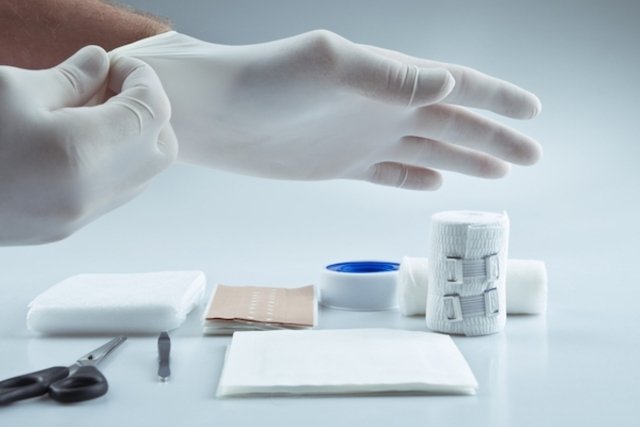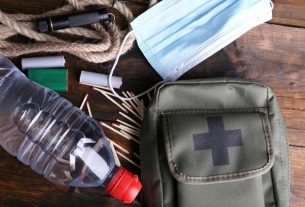Before dressing simple wounds, such as a small cut on your finger, it is important to wash your hands and, if possible, put on clean gloves to avoid contaminating the wound.
In other types of more complicated wounds, such as burns or bedsores, it is necessary to take other care and, in some of these cases, it may even be necessary to have the dressing done in the hospital or health center, to avoid complications such as serious infections and tissue death. .
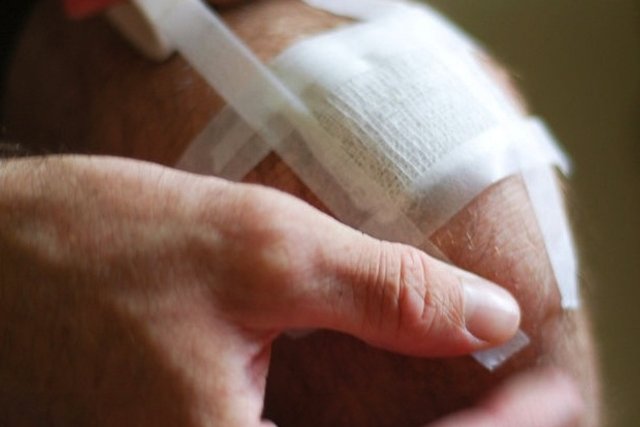
Main types of dressings
Generally, to make the dressing it is important to have some materials at home such as saline solution, povidone iodine, band-aid and bandages, for example. See what a first aid kit should contain.
1. Simple healing for cuts
In this way, to make a simple dressing of a cut, quickly and correctly you must:
- wash dry with cold running water and neutral soap or saline solution;
- Dry the wound with dry gauze or clean cloth;
- Cover the wound with dry gauze and secure it with an adhesive plaster, band-aid or ready-made dressing, which is sold in pharmacies.
If the wound is large or very dirty, after washing it, it is recommended to apply an antiseptic product, such as povidone-iodine, for example. However, this type of substance should only be used until a scab forms, as after that moment the wound is closed and presents no risk of developing bacteria.
Antiseptic products should not be the first choice for cleaning simple wounds, preferring water or saline solution. However, this type of product, such as Merthiolate or Povidine, may be indicated when there is a high risk of the wound becoming infected.
The dressing must be changed within a maximum of 48 hours, whenever it is dirty or as instructed by a nurse.
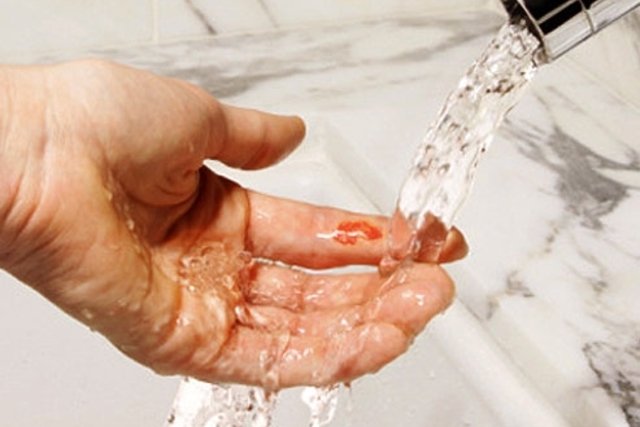
In serious cases, such as deep cuts or when the wound bleeds a lot, the same thing should be done, however, afterwards it is recommended to go immediately to the emergency room or hospital, as the person needs to be evaluated by the doctor, and may even need to take stitches or place staples.
2. Bedsores dressing
The dressing for bedsores should always be done by a nurse, but if the dressing comes off during the night or becomes wet during the bath, you should:
- wash dry with cold tap water or saline solution, not touching the wound with your hands;
- Dry the wound with dry gauze without pressing or scraping;
- Cover the wound with another dry gauze and secure the gauze with an adhesive plaster;
- Position the person in bed without putting pressure on the bedsore;
- Call the nurse and report that the bedsore dressing has come off.
Bedsore dressings should always be made with gauze and sterile dressings to prevent infections, as it is a very sensitive wound.
It is very important that the dressing is redone by a nurse, as, in most cases, the dressing also includes the use of ointments or materials that help with healing, in addition to gauze or tape. One example is collagenase ointment, which helps remove dead tissue, allowing new tissue to grow healthily.
See examples of the main ointments used to treat bedsores.
3. Burn dressing
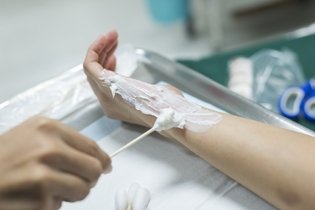
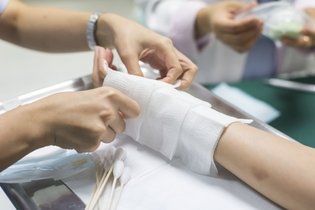
When a person burns themselves with hot water, frying oil or a stove flame, for example, the skin becomes red and sore, and it may be necessary to apply a bandage. Therefore, you must:
- By cold water current for more than 5 minutes to cool the wound;
- Apply moisturizing cream with a refreshing and calming effect, such as Nebacetin or Caladryl, or a cortisone-based cream, such as Diprogenta or Dermazine, which can be purchased at the pharmacy;
- Cover with gauze Clean the burn and secure with a plaster.
If the burn has blisters and the pain is very severe, you should go to the emergency room, as you may need to take analgesics via vein, such as Tramadol, for example, to relieve the pain. Find out more about this type of dressing.
When to go to the doctor
Most wounds that occur at home can be treated without going to the hospital, however, if the wound takes a long time to start healing or if signs of infection appear such as severe pain, intense redness, swelling, pus oozing out or a fever above 38º C, it is recommended to go to the emergency room to evaluate the wound and start appropriate treatment.
Furthermore, wounds with a higher risk of infection, such as those caused by animal bites or rusty objects, for example, should always be evaluated by a doctor or nurse.
We regularly update our content with the latest scientific information, so that it maintains an exceptional level of quality.

Sign up for our newsletter and stay up to date with exclusive news
that can transform your routine!
Warning: Undefined array key "title" in /home/storelat/public_html/wp-content/plugins/link-whisper-premium/templates/frontend/related-posts.php on line 12
Warning: Undefined array key "title_tag" in /home/storelat/public_html/wp-content/plugins/link-whisper-premium/templates/frontend/related-posts.php on line 13

